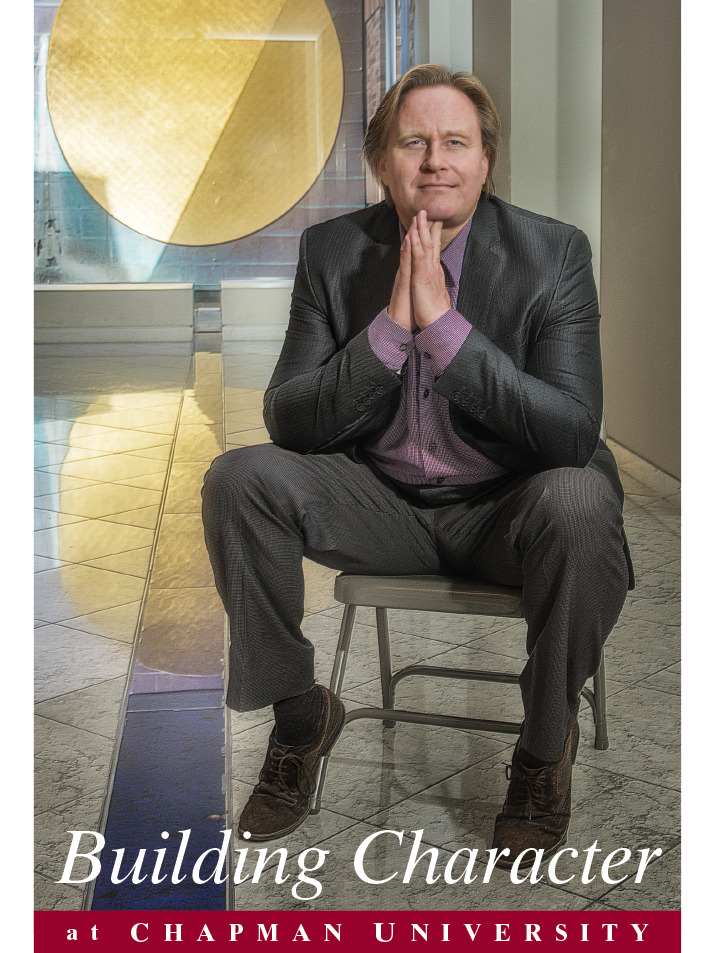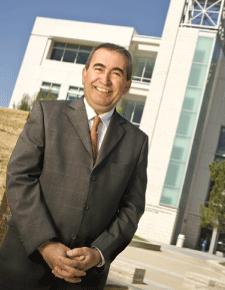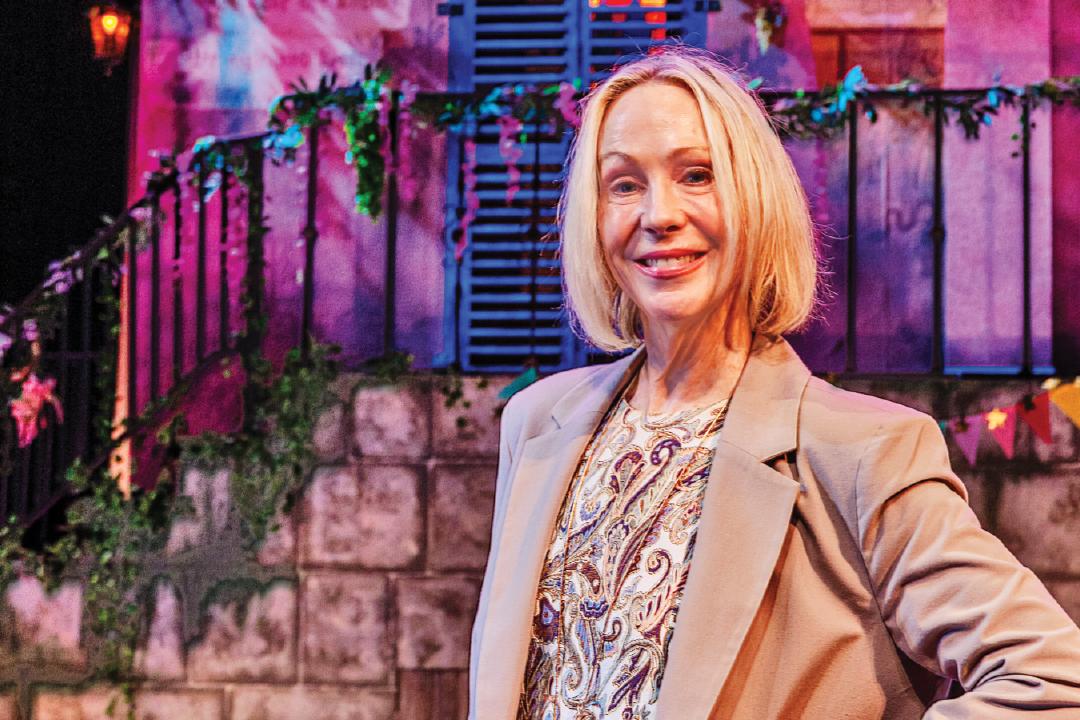
Jeff Tollaksen, PhD
At an age when many other kids were pondering questions such as whether they could talk their parents into ice cream for dessert, Jeff Tollaksen contemplated higher-level questions about the inner workings of the universe.
As he walked through the forest and along the lake next to his bluff-side childhood home in Southwestern Michigan, the seven-year-old contemplated questions such as, what is time? And why does time go forward? Or does it really?
For Tollaksen, now Director of Chapman University’s Institute for Quantum Studies, which he founded, and Professor of Physics, Schmid College of Science and Technology, those questions have led him down an enchanted career path paved with remarkable and even astonishing answers that have earned him a name in the field of physics.
Following His Bliss
“When my students are open to conversations about their futures, I mention my favorite quote by philosopher Joseph Campbell. Campbell would advise his students to try to find those needs, either within themselves or within society, about which they were most passionate. He coined a phrase, ‘Follow your bliss.’ I’ve found great fulfillment living that way,” says Tollaksen. “My favorite questions have always been the big, age-old ones. It’s been argued that pursuing such big questions makes it harder to excel in physics, but I decided early on that I wanted to help solve those big mysteries of existence, even if I just made a dent in them.”
Talk to Tollaksen’s colleagues, and they will tell you that he’s made much more than a dent in the field of physics.
“Jeff has always been a deep thinker and has made a number of important contributions to physics over his career,” says Andrew Jordan, Professor of Physics at the Department of Physics and Astronomy at the University of Rochester and a Chapman Affiliated Scholar and member of the Institute for Quantum Studies.
“As the director of the Institute for Quantum Studies, which Jeff started from scratch with his mentor (acclaimed quantum physicist) Yakir Aharonov, he has brought together talented scientists to work on important topics of the day,” says Jordan. “By using pre- and post-selected quantum mechanics, Jeff’s most insightful work has been about paradoxical quantum effects such as the pigeon-hole effect, the quantum Cheshire Cat and more deeply understanding Hardy’s paradox.”
Inspired Theory
The Quantum Cheshire Cat was one of the topics of Tollaksen’s PhD thesis and resulted in a great deal of notice. The theory stemmed from a discovery made by Aharonov in the 1960s about the nature of time—not coincidentally—around the time that Tollaksen pondered the same questions as a boy.
Aharonov, who received the 2009 President’s National Medal of Science, found that time in quantum mechanics flows, at least mathematically, two ways instead of just one. Time, he found, doesn’t just flow from past to present. In fact, events both in the past and in the future can affect the state of things in the present.
Working together since 1990, Tollaksen and Aharonov found that these influences could lead to a particle and all its properties being separated from each other—hence the Cheshire Cat being separated from its smile, eliciting Alice’s famous comment: “Well I’ve often seen a cat without a grin...but a grin without a cat is a most curious thing.”
Curious Beginnings
Much like Alice in her exploration of Wonderland, Tollaksen spent his childhood and early adulthood foraging for answers while simultaneously asking deeper questions. He followed up his contemplative walks thinking about time and its structure with more avid studies.
“I started to get more scholarly with my approach,” says Tollaksen. “I was fortunate to have incredible parents, who were real intellectuals and also interested in the big why questions, including the relationship between science and the mind. Our house was literally covered with floor to ceiling books, so I had plenty of material to explore.”
During his self-guided studies, he discovered the work of two icons of physics who had been contemporaries of Einstein—John Wheeler and Richard Feynman. “I was about 12 when I struggled to read the complicated texts and came to understand some immensely profound discoveries of Feynman, who did his PhD with Wheeler about the way light works,” says Tollaksen. “They found that the original theories made an assumption and had snuck in a human bias. The assumption was that nature experiences time the way humans experience time.”
Life-Changing Mentors
Tollaksen decided to go to the source regarding questions about time during his senior year of high school. “When I was 18, I wasn’t getting much out of high school, so I decided to spend a big chunk of my senior year at the California Institute of Technology, where Richard Feynman was working at the time. I had classes with him, and he took me under his wing. He had just made an enormous discovery—the completely new idea of the quantum computer, and he taught a class dedicated to it. Today, we’re beginning to use quantum computers for game changers like cures for diseases.”
Even more meaningful was Tollaksen’s meeting Yakir Aharonov, whom he came to know in the late 1980s. “I was well aware of Yakir, because he is an icon of modern physics, so meeting him was very exciting. When he decided to accept me as his student at the beginning of my graduate studies, it was one of the most exhilarating moments of my life.”
The two have been working together ever since. “It’s been enormously productive to work with Yakir,” says Tollaksen. “Our research keeps delivering fruit after fruit. It’s very exciting—like constantly riding Mr. Toad’s wild ride at Disneyland.”
To Tollaksen, one of the secrets of his and Yakir’s success and that of the Institute for Quantum Studies is “not losing a childhood sense of wonder and awe at the grandeur of the universe. Every time we discover a new puzzle about nature, we approach it like Sherlock Holmes looking into the deep inner secrets of the universe.”
Institute for Quantum Studies
Encouraging such enthusiasm is the aim of the Institute for Quantum Studies, which opened in 2012. “We wanted to create a place where top scientists from around the world would come to have jam sessions about physics and make big creative breakthroughs, and that has happened,” says Tollaksen, who came to Chapman in 2008 after founding and directing the Center for Quantum Studies at George Mason University. “Recently, Chapman’s Institute for Quantum Studies partnered with the well-known Perimeter Institute for Theoretical Physics to facilitate joint research, collaboration and visiting positions.”
L. Andrew Lyon is Dean of Chapman University’s Schmid College of Science and Technology. “Jeff is a ‘connector,’ ” he says. “He works diligently to connect Chapman and his colleagues to the world of physics beyond the borders of our campus. He has put physics at Chapman ‘on the map.’ Because of their collective efforts, the physics faculty and the Institute for Quantum Studies have made Chapman a place where leading minds from around the world come to speak, do research and chart new intellectual paths.”
Tollaksen also strives to teach a sense of wonder to his students. “One of the great things about teaching at Chapman is the small class sizes, which allows professors to inspire students to enrich their lives,” says Tollaksen, who devised the physics department and all of its classes.
“One of the classes I created had every student in mind, not just science majors. I called it ‘The Beauty of Physics,’ ” he says. “I had one student, whose major wasn’t physics, tell me after he graduated that the Beauty of Physics had the biggest impact on his education. Knowing that I can have that kind of effect on someone’s life deeply inspires me and is perhaps one of the greatest experiences of fulfilment for me.”



